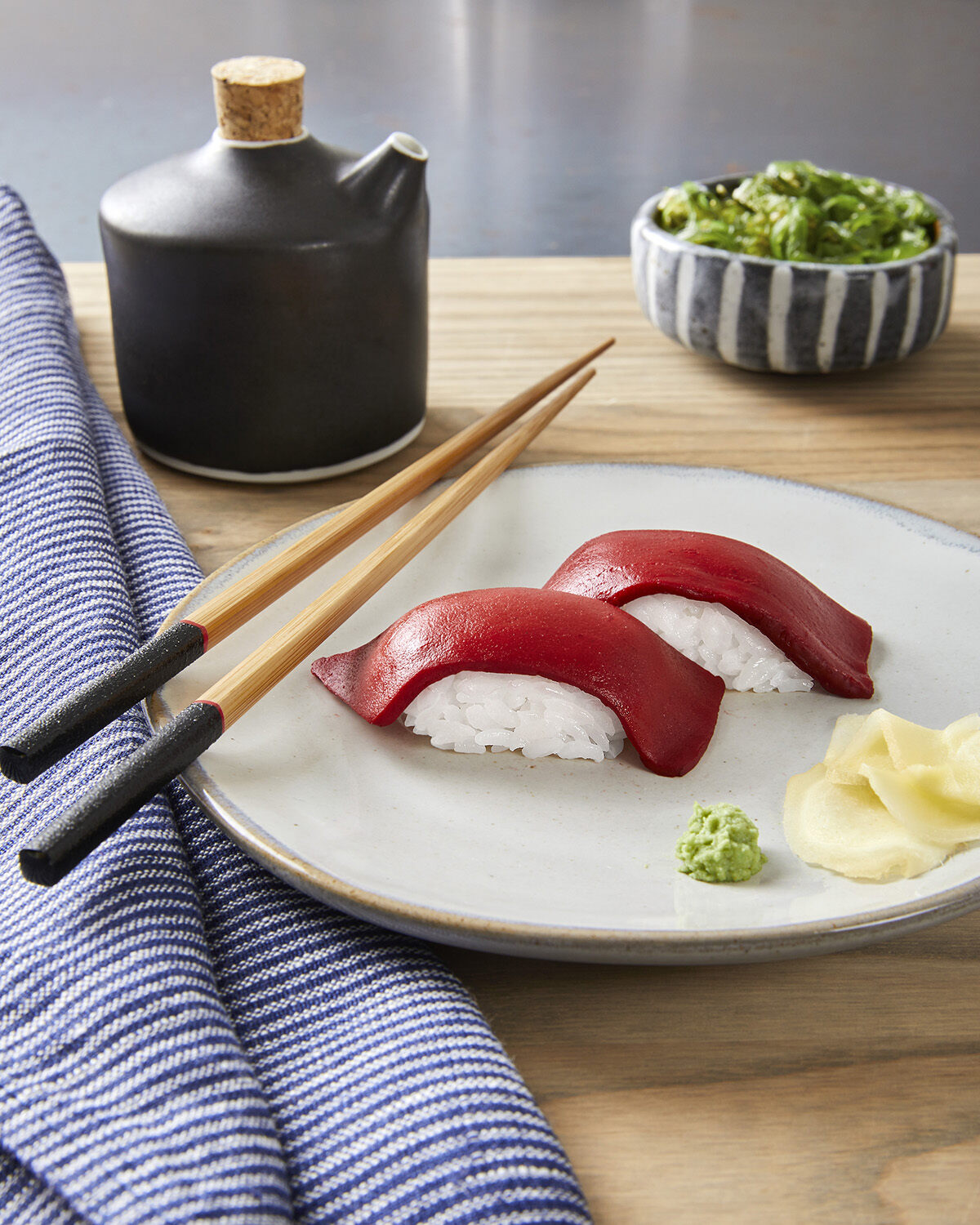Everyone knows the saying about teaching a man to fish and you’ll feed him for a lifetime, but what if someone was taught to make fish instead? These days, that’s far from an outlandish idea.
In recent years, lab-grown meats have become a hot topic, being touted as an eco-friendly alternative to animal agriculture, but it’s something that many diners have been hesitant to try. That’s not stopping Finless Foods from getting into the game, though; the Emeryville-based company was founded in 2017 by Michael Selden and Brian Wyrwas with the intention of creating healthy, sustainable and accessible cell-cultured seafood alternatives.
“To address the climate, sustainability and global challenges we face, and given the tight timeline we have, we need big swings and wildly innovative ideas,” says Shannon Cosentino-Roush, chief strategy officer at Finless Foods.
“Alternative seafood provides an additional source of supply that can be leveraged to meet the ever-growing demand for seafood without placing additional pressure on the ocean — especially given that we can’t take much more fish from the sea sustainably and in support of a thriving ocean.”
Creating a cell-based tuna was the clear way forward for Finless Foods as it embarked upon its mission. Per a UN report, tuna is the most consumed fish in the world; the unyielding demand on global stocks of this fish creates a challenge for sustainability, so it seemed like a good place to start. The company had its first cell-cultured seafood tasting in 2017, and since then they’ve been working on a cell-cultured bluefin tuna prototype.
Finless Foods’ cell-cultured bluefin tuna sashimi is made of 51 percent cell material (as in real bluefin tuna cells) and 49 percent plant-based materials, the latter of which are used to suspend the cell material so that it resembles, tastes and has the mouthfeel you expect from conventional sashimi. Just like its freshly caught counterpart, it’s intended to be prepared and served in the same way you would conventional seafood. To ensure there are no questions about the safety of consuming their cell-based products, the company is fully transparent about the process of how the tuna gets made.
“We isolate the cells, grow them out in bioreactors (large steel drums like you would see in a microbrewery), and feed the components of the cell that it needs to grow (true even in our bodies), including salts, sugars and amino acids,” says Cosentino-Roush. “We then harvest the cells and use similar techniques found in traditional food production to create the prototypes or final products.”
As the company looks to commercialize the prototype, the team has been working on scale-up and optimization to drop the costs, and they’re in the process of undergoing regulatory approval, which would allow consumption and sale of the tuna in the United States. Looking toward the future, there’s not necessarily an assumption that people will completely make the switch to seafood substitutes. “We often say ‘and’ not ‘or’,” says Cosentino-Roush: the company aims to present plant and cell-based creations as complementary to our diets, giving consumers more choices while reducing stress on the ocean’s seafood supply. And the team is hopeful that the breakthroughs they make will further the conversation around the rapidly evolving food tech industry.
“We need to redesign and rethink so many of our systems, including the food system,” says Cosentino-Roush. “Now is the time for big ideas.”













